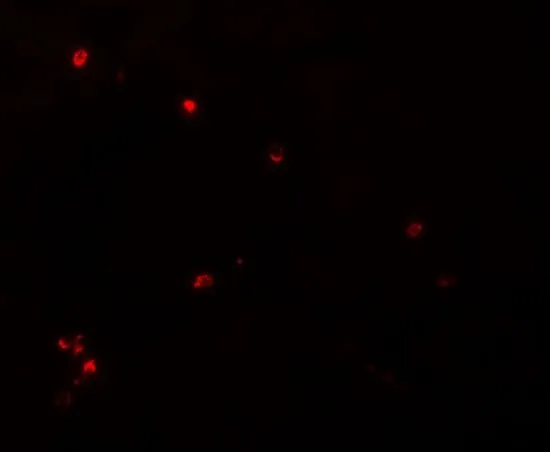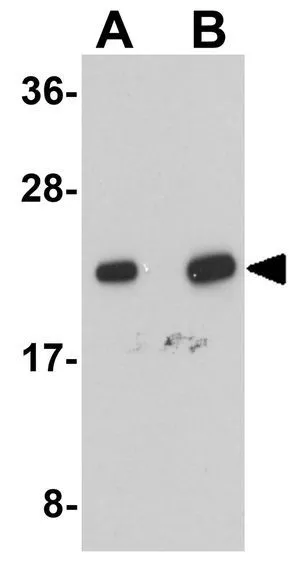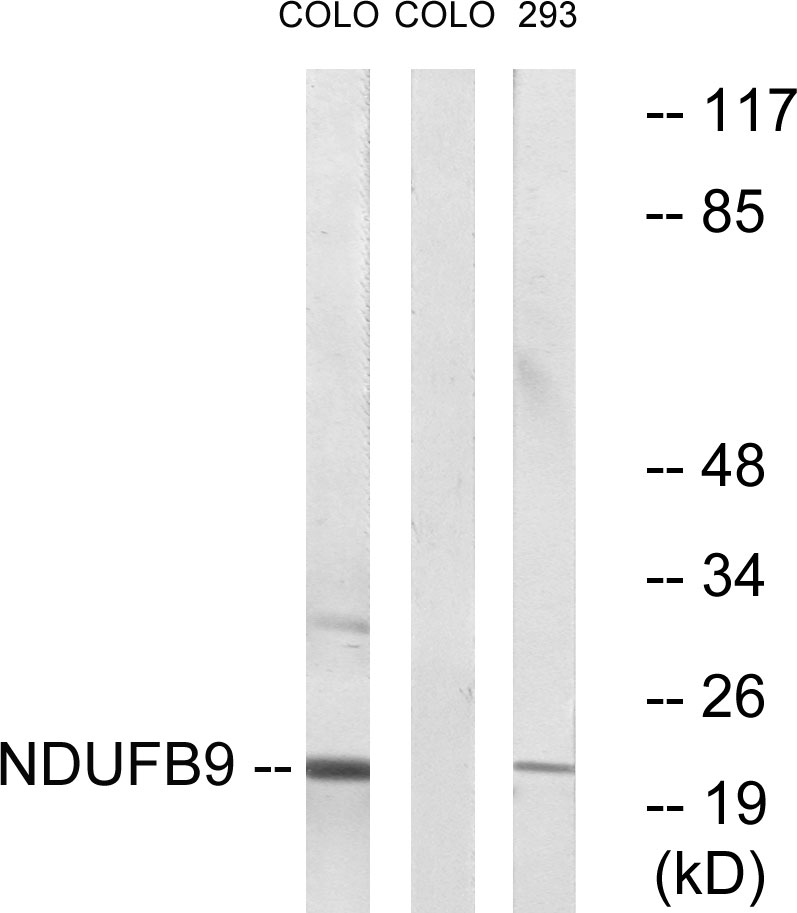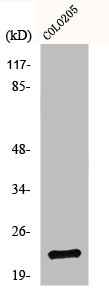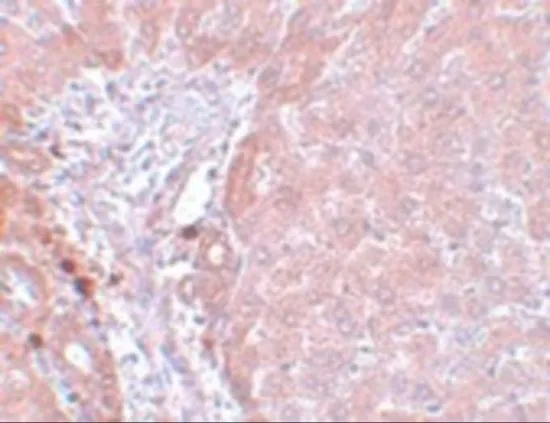
IHC-P analysis of rat liver tissue using GTX85007 NDUFB9 antibody. Working concentration : 5 microg/ml
NDUFB9 antibody
GTX85007
ApplicationsWestern Blot, ELISA, ImmunoHistoChemistry, ImmunoHistoChemistry Paraffin
Product group Antibodies
TargetNDUFB9
Overview
- SupplierGeneTex
- Product NameNDUFB9 antibody
- Delivery Days Customer9
- Application Supplier NoteWB: 1 - 2 microg/mL. IHC-P: 5 microg/mL. *Optimal dilutions/concentrations should be determined by the researcher.Not tested in other applications.
- ApplicationsWestern Blot, ELISA, ImmunoHistoChemistry, ImmunoHistoChemistry Paraffin
- CertificationResearch Use Only
- ClonalityPolyclonal
- Concentration1 mg/ml
- ConjugateUnconjugated
- Gene ID4715
- Target nameNDUFB9
- Target descriptionNADH:ubiquinone oxidoreductase subunit B9
- Target synonymsB22, CI-B22, LYRM3, MC1DN24, UQOR22, NADH dehydrogenase [ubiquinone] 1 beta subcomplex subunit 9, LYR motif-containing protein 3, NADH dehydrogenase (ubiquinone) 1 beta subcomplex, 9, 22kDa, NADH-ubiquinone oxidoreductase B22 subunit, complex I B22 subunit
- HostRabbit
- IsotypeIgG
- Protein IDQ9Y6M9
- Protein NameNADH dehydrogenase [ubiquinone] 1 beta subcomplex subunit 9
- Scientific DescriptionNDUFB9, also known as NADH dehydrogenase (ubiquinone) 1 beta subcomplex 9 (NDUFB9), is a ubiquitously expressed LYR-motif containing protein. It has been suggested to be a candidate gene for the branchio-oto-renal (BOR) syndrome, which is characterized by branchial and renal abnormalities and heredity deafness disorders. Other than its LYR-motif, LYRM3 appears to have no functional or structural relationship to either LYRM1 or LYRM2.
- Storage Instruction-20°C or -80°C,2°C to 8°C
- UNSPSC12352203

